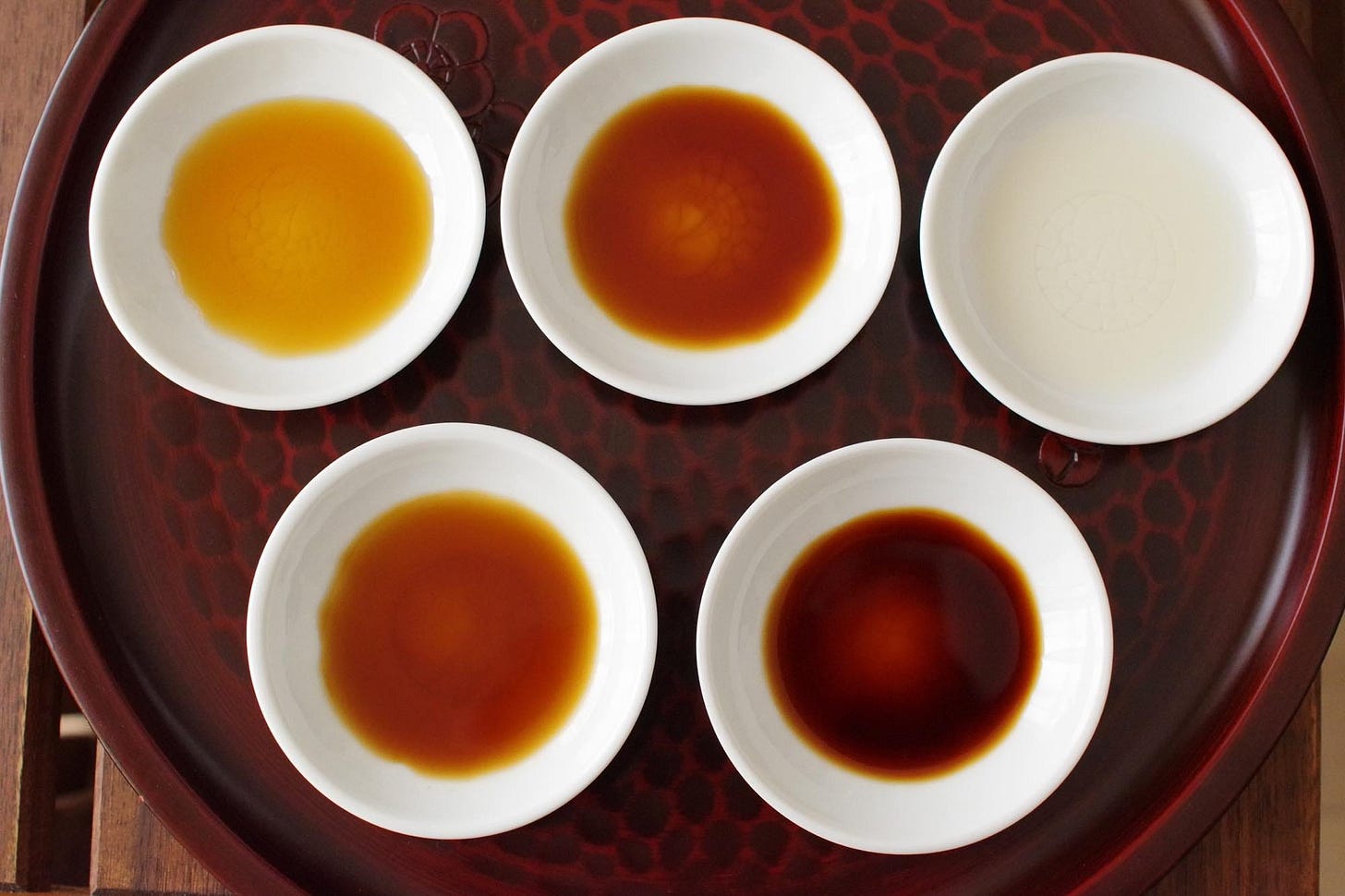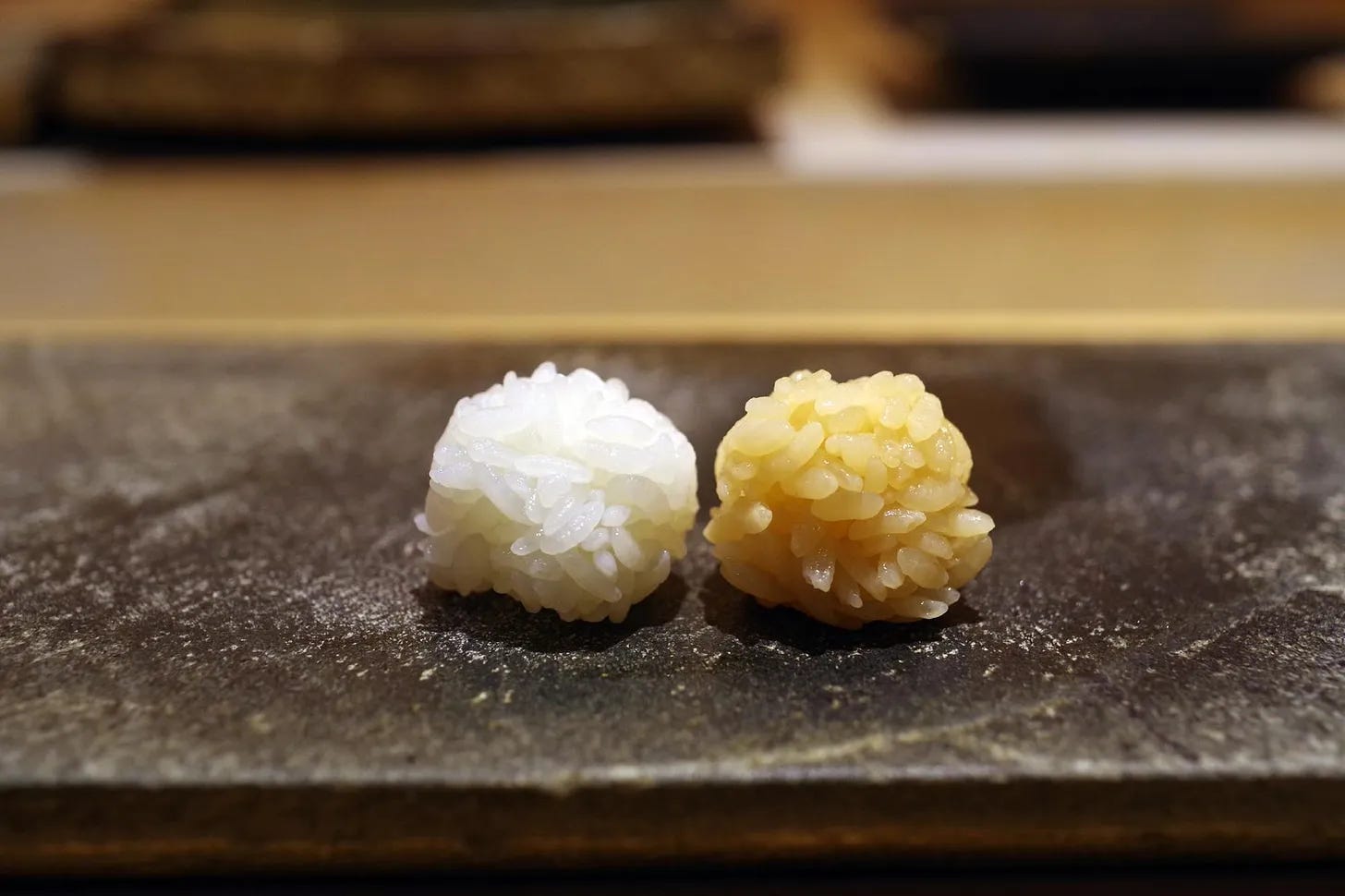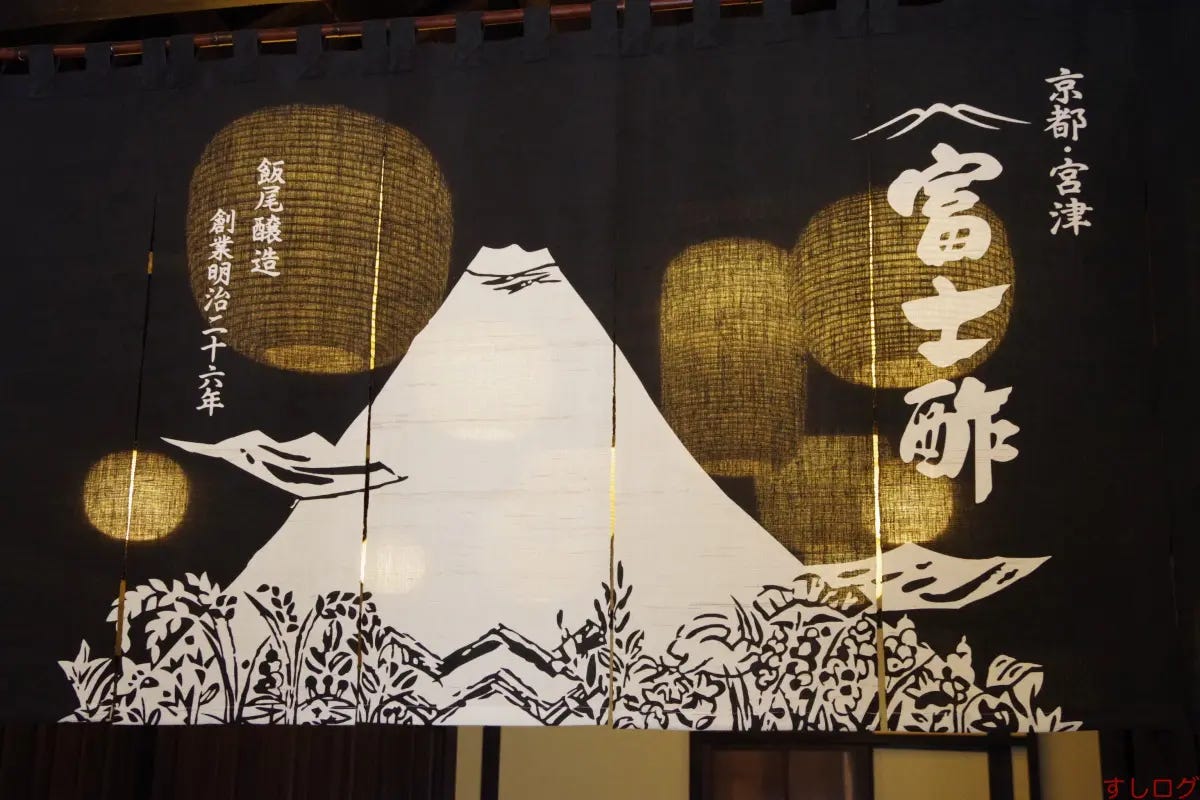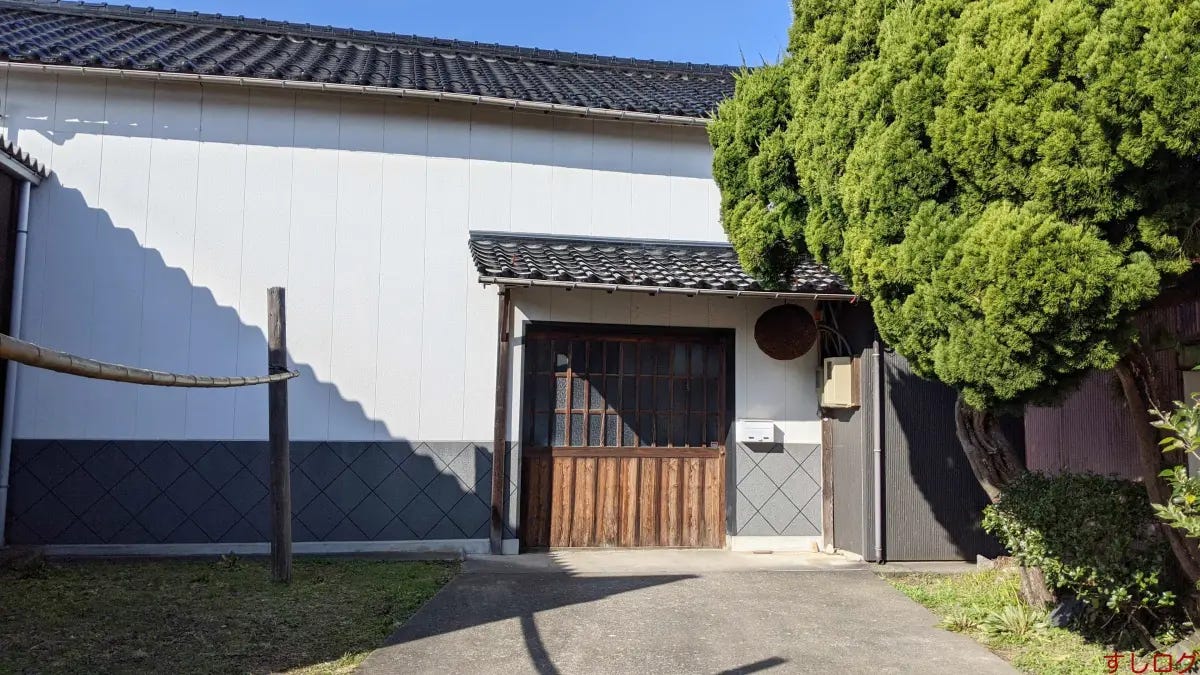4. The Heart of Sushi: A Guide to “Shari”, Sushi Rice, and seasonings
#3 About Vinegar for Shari
Alongside rice, vinegar stands as one of the most crucial ingredients in sushi. Just as rice is the lifeblood of sushi, vinegar can be considered the “blood” of the rice. Traditional Japanese vinegar is produced through a two-step process. Initially, rice is fermented with alcohol, followed by a secondary fermentation with acetic acid. Alternatively, sake lees, a byproduct of alcohol fermentation, undergo acetic acid fermentation. The product of the first method is known as “rice vinegar (kome-zu)”, while the vinegar resulting from the second method is referred to as “red vinegar (aka-zu)”.
Vinegar for Shari
Many restaurants in Japan, apart from high-end sushi establishments, may not prioritize vinegar, with some considering it merely a seasoning for sourness. However, I want to emphasize that high-quality vinegar is indispensable for truly delicious sushi. It is virtually impossible to create excellent sushi with low-quality, cheap vinegar.
The critical aspect to understand about sushi vinegar is that it needs to be not just sour, but also flavorful. This is a point often misunderstood, even in Japan. Vinegar that is solely sour can impart a cheap taste to sushi, potentially turning off both children and adults from sushi and vinegar. High-quality vinegar possesses not only acidity but also depth of flavor, allowing for minimal or even no sugar in the preparation of delicious sushi rice. In fact, the need to add sugar to sushi rice often arises from the use of lower-quality vinegar, where sugar is used to balance out the taste.
From a historical perspective, the popularity of Edomae-zushi in Edo (now Tokyo) surged with the development of superior vinegar. As referred in Chapter 1, this vinegar is known as “Mitsuban Yamabuki”. It's a red vinegar made from sake lees, pioneered by Nakano Matazaemon, the founder of Mizkan Corporation, which has grown into a global company. (Historically, the conventional vinegar was made from rice.) Even today, many top sushi restaurants in Tokyo use red vinegar, honoring its role in the origins of Edomae-zushi.
Post World War II, vinegar production underwent significant industrialization. During this period, the Rapid brewing method, or full fermentation, became the norm. This technique, which takes only a day to complete, uses minimal sake lees or rice as raw materials and relies on artificial alcohol and machinery to expedite the fermentation process.
Static fermentation and fine breweries
In contrast, the original vinegar-making process, known as “static fermentation”, involves an acetic acid fermentation period of 80 to 120 days and a maturation period of 240 to 300 days, making the rapid brewing method significantly shorter.
Unfortunately, only a few breweries and manufacturers still use static fermentation, but those that do continue to produce high-quality, flavorful vinegar. When shopping for authentic, premium vinegar in Japan, the key term to look for is “static fermentation”.
One of the most traditional and innovative breweries practicing static fermentation is Iio Brewery in Miyazu, Kyoto Prefecture. This brewery is unique in that it not only brews its own sake, the base ingredient for its vinegar, but also grows its own rice pesticide-free, either directly or under contract. The detailed brewing process is described in my blog, which you can read via Google Translate.
Such an approach is exceedingly rare. No other brewery spends more than 40 days producing sake for vinegar prior to engaging in static fermentation. Iio Brewery also ages its red vinegar, used in Edomae-zushi, for 10 to 15 years. Kokonoe Saika in Wakayama Prefecture is the only other brewery producing red vinegar solely from its own sake lees. “Fuji-su” is the brand name of Iio Brewery's vinegar, a product to remember when visiting Japan. It is available in supermarkets that stock high-quality seasonings and on the food floors of department stores in urban areas.
Other breweries that contribute to the vinegars popular in today's Edomae-zushi restaurants include Yokoi Brewery in Tokyo, Uchibori Brewery in Gifu Prefecture, and Kisaichi Brewery in Chiba Prefecture. Additionally, there are notable breweries that excel in making rice vinegar through static fermentation, such as Imagawa vinegar brewery in Ishikawa prefecture, Koubara vinegar brewery and Tobaya vinegar store in Fukui prefecture, Totsuka brewery in Yamanashi prefecture, Sugita Yojihei Shoten in Hiroshima prefecture, Shobun vinegar in Fukuoka prefecture, and Ukon vinegar in Saga prefecture.
Lately, an increasing number of sushi chefs are turning to vinegar from local breweries, contributing to the spread of Edomae-zushi beyond its traditional region. Using traditional, labor-intensive, and costly seasonings in this way is a noble effort by top sushi chefs to raise awareness and encourage consumption. The principle of local production for local consumption has always been integral to Japanese culture, and it's heartening to see this approach gaining momentum in the sushi industry.
The next article will delve into the significance of seasonings such as salt, soy sauce and mirin. Just as with the cuisines of all countries, seasonings play a crucial role in defining the flavor of a dish, and the finest chefs are meticulous in their selection.
If you enjoy this article, please share it on your social networks. Your support inspires me to keep writing!
The TOC of “Spirits of Sushi“
Introduction: Unveiling Sushi Secrets
The History of Sushi
Exploring Sushi Varieties: Edomae-zushi (Nigiri-zushi), Kansai-zushi, and More
Essential Sushi Vocabulary: Key Terms for Navigating a Sushi Restaurant
The Heart of Sushi: A Guide to “Shari”, Sushi Rice
A Deep Dive into Sushi Fish and Accompaniments
The Art of the Sushi Master: Traditional Japanese Knives
Japan's Exquisite Fish Culture: From Tsukiji to Toyosu Market and Various Regions
Must-Visit Sushi Restaurants: From Tokyo to Sapporo, Fukuoka, and Other Regions
Regional Sushi Styles: Exploring Japan's Diverse Sushi Culture
Sushi and Sake Pairings: A Culinary Adventure
Sushi Etiquette and Table Manner: Dining like a Sophisticated Local
Shopping in Japan: Essentials for Crafting Delicious Sushi at Home
Sushi in Pop Culture: Manga and Movies
Sushi: A Lens on Health and Sustainability
Wrapping Up: The Future of Sushi








